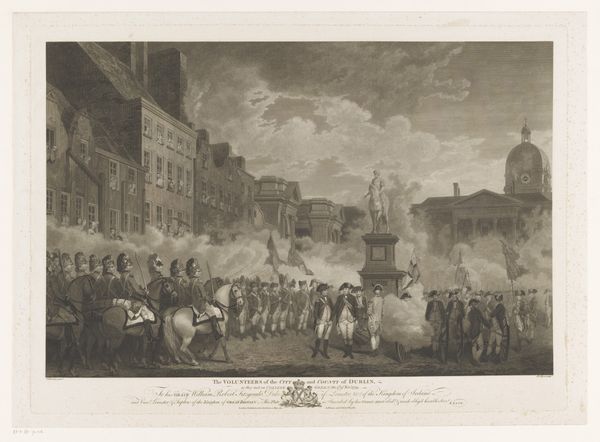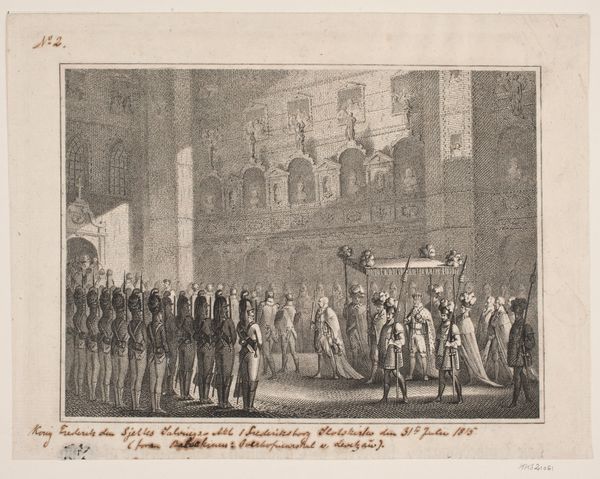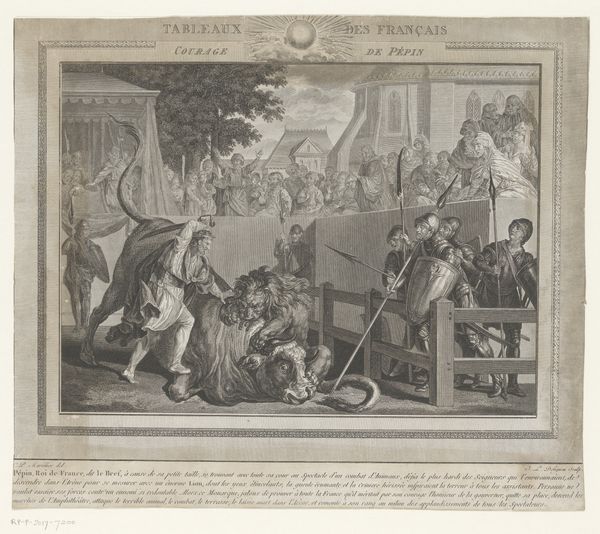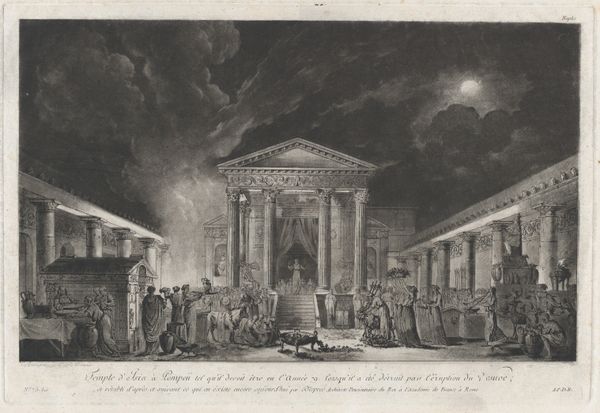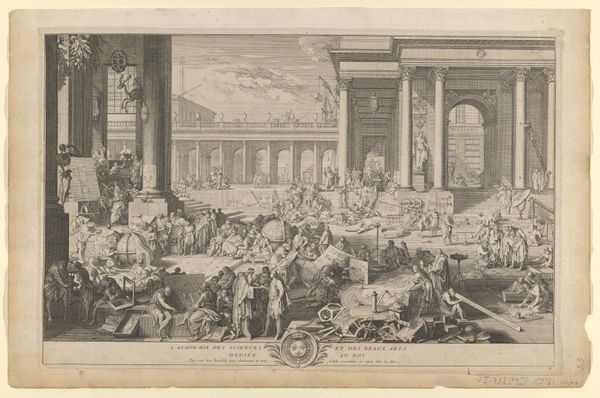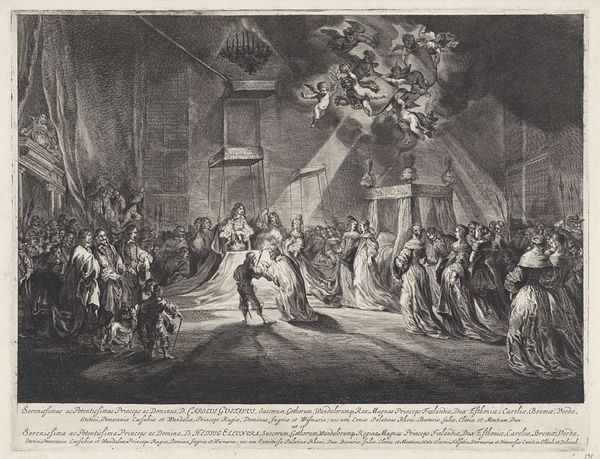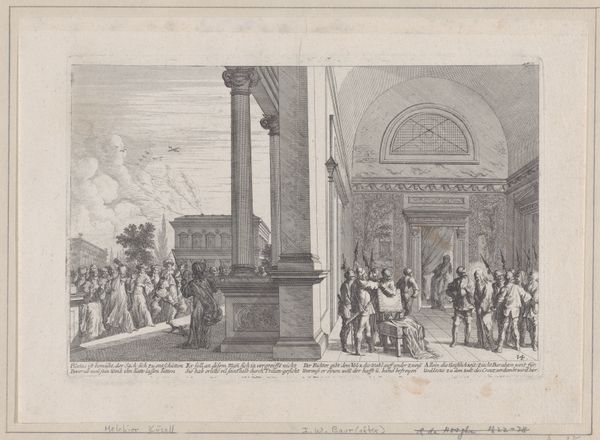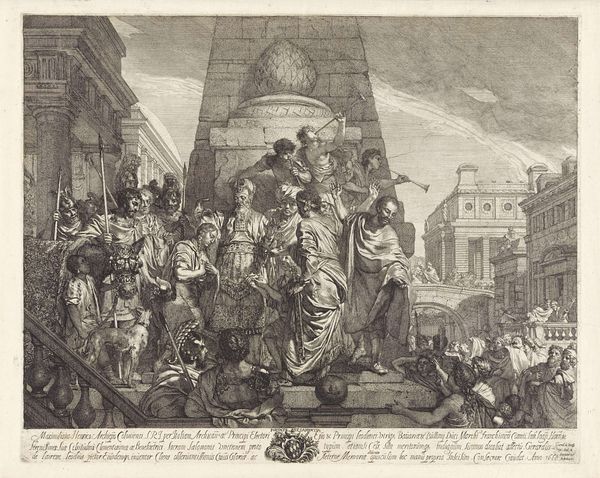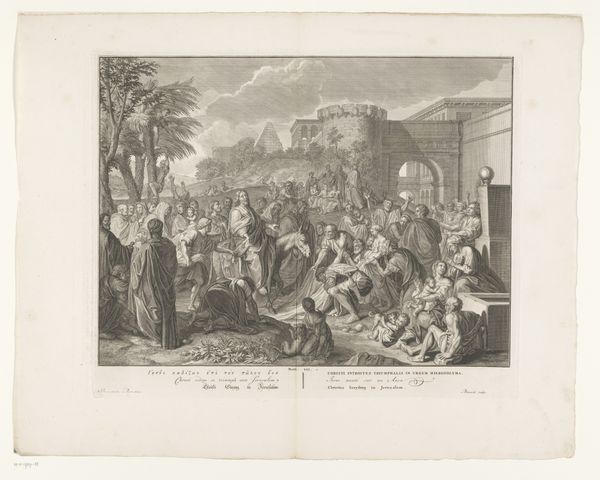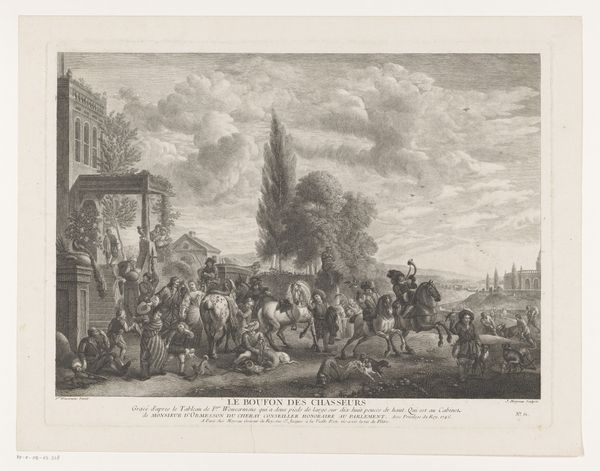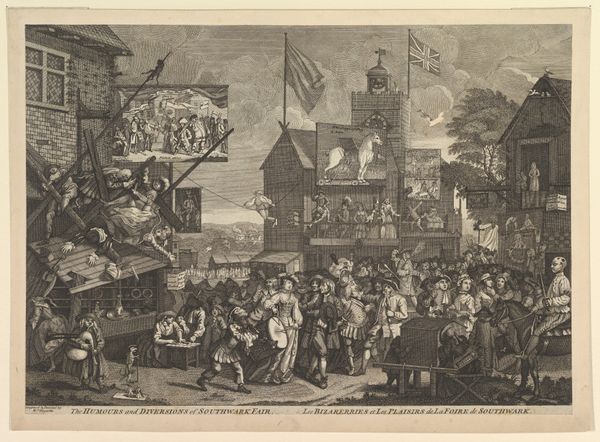
engraving
#
16_19th-century
#
narrative-art
#
neoclassicism
#
19th century
#
cityscape
#
history-painting
#
engraving
Dimensions: height 482 mm, width 632 mm
Copyright: Rijks Museum: Open Domain
Editor: Here we have James Heath's engraving, "Rellen in Broad Street", created in 1790. The mood is quite chaotic. A crowd dominates the foreground and smoke billows in the midground. I'm curious to know, from your perspective, what story does this image tell, and how does it relate to the period it depicts? Curator: This engraving documents the anti-Catholic Gordon Riots of 1780, a significant event in British social and political history. It’s interesting to note how Heath depicts the rioters: notice the way they are presented with a certain... passivity almost. Is that something that stood out to you? Editor: Yes, that's true. They seem more like onlookers than active participants. Many are simply sitting and watching. It doesn't align with the intensity implied by the word "riot." Curator: Exactly. Heath’s portrayal reflects a broader historical narrative. Representations like this served the interests of the ruling classes by downplaying the rioters' agency and reinforcing the narrative of social order threatened by the "mob." Do you see how the presence of soldiers also influences that narrative? Editor: I do. They create a stark contrast, emphasizing the authority and control versus the disorder. Was this print intended to be purely documentary, or did it serve a particular agenda? Curator: The image would likely circulate among the upper and middle classes to serve as a reminder of social vulnerability, as a visual tool of maintaining social discipline and bolstering support for law and order. These kinds of prints often performed an important political function. Editor: That’s really interesting to think about. I initially viewed it as a historical record, but understanding its potential purpose as a political message changes my perspective entirely. Curator: Exactly! And remembering to critically analyze who creates and circulates such imagery is part of thinking like a historian.
Comments
No comments
Be the first to comment and join the conversation on the ultimate creative platform.
